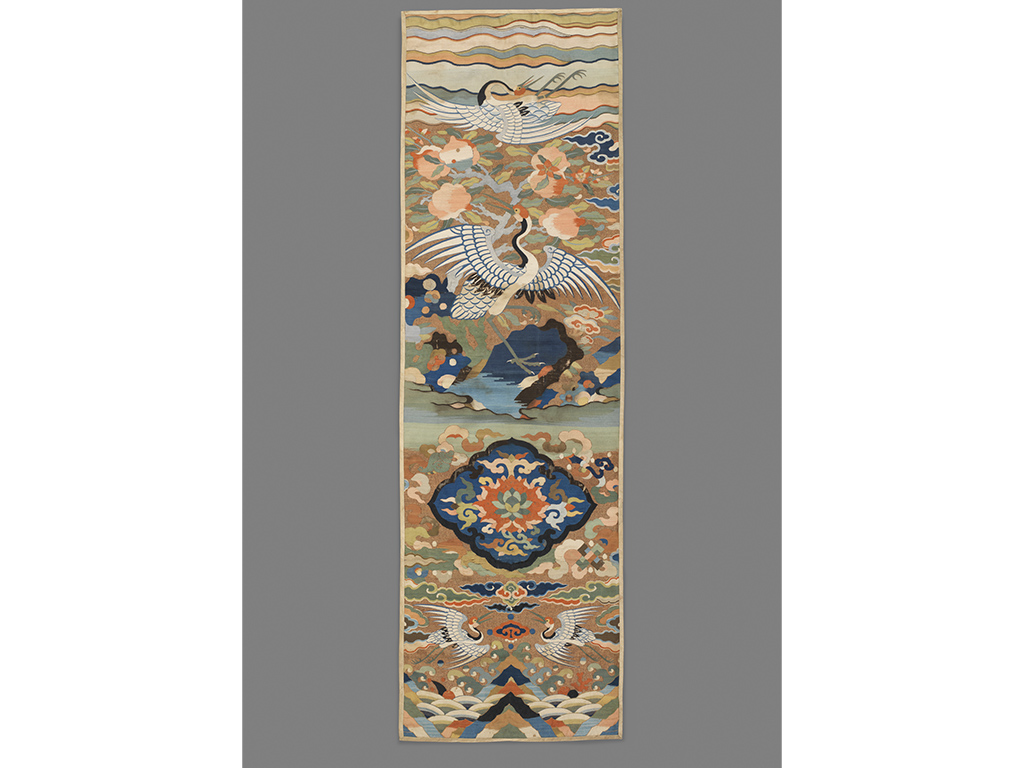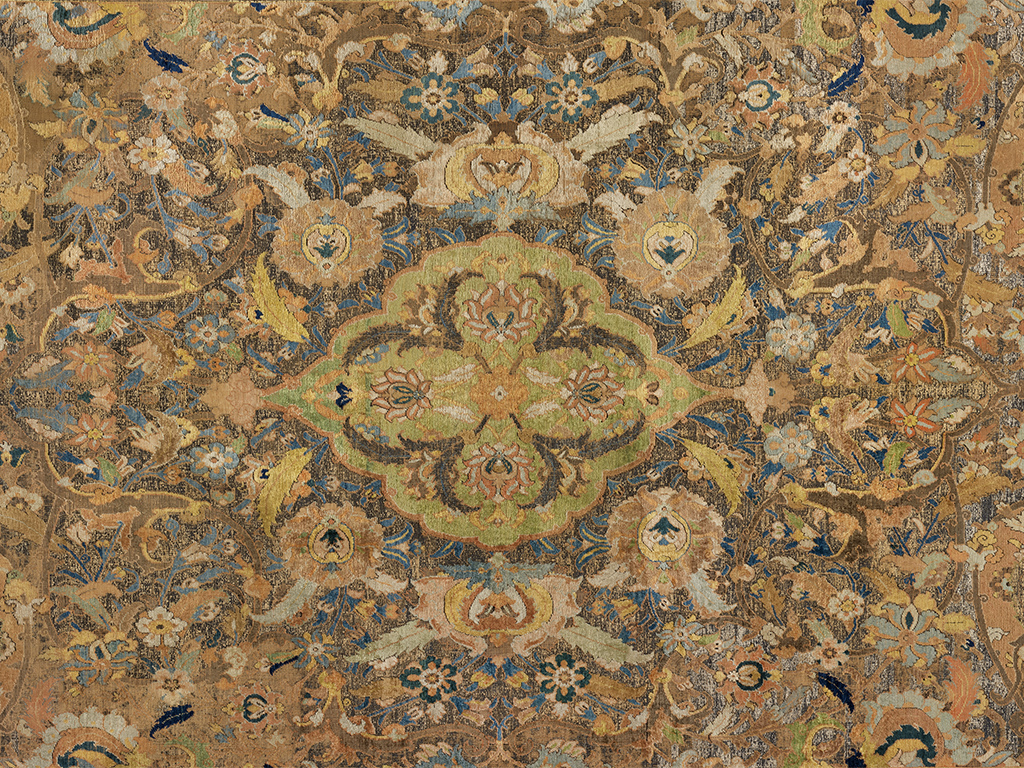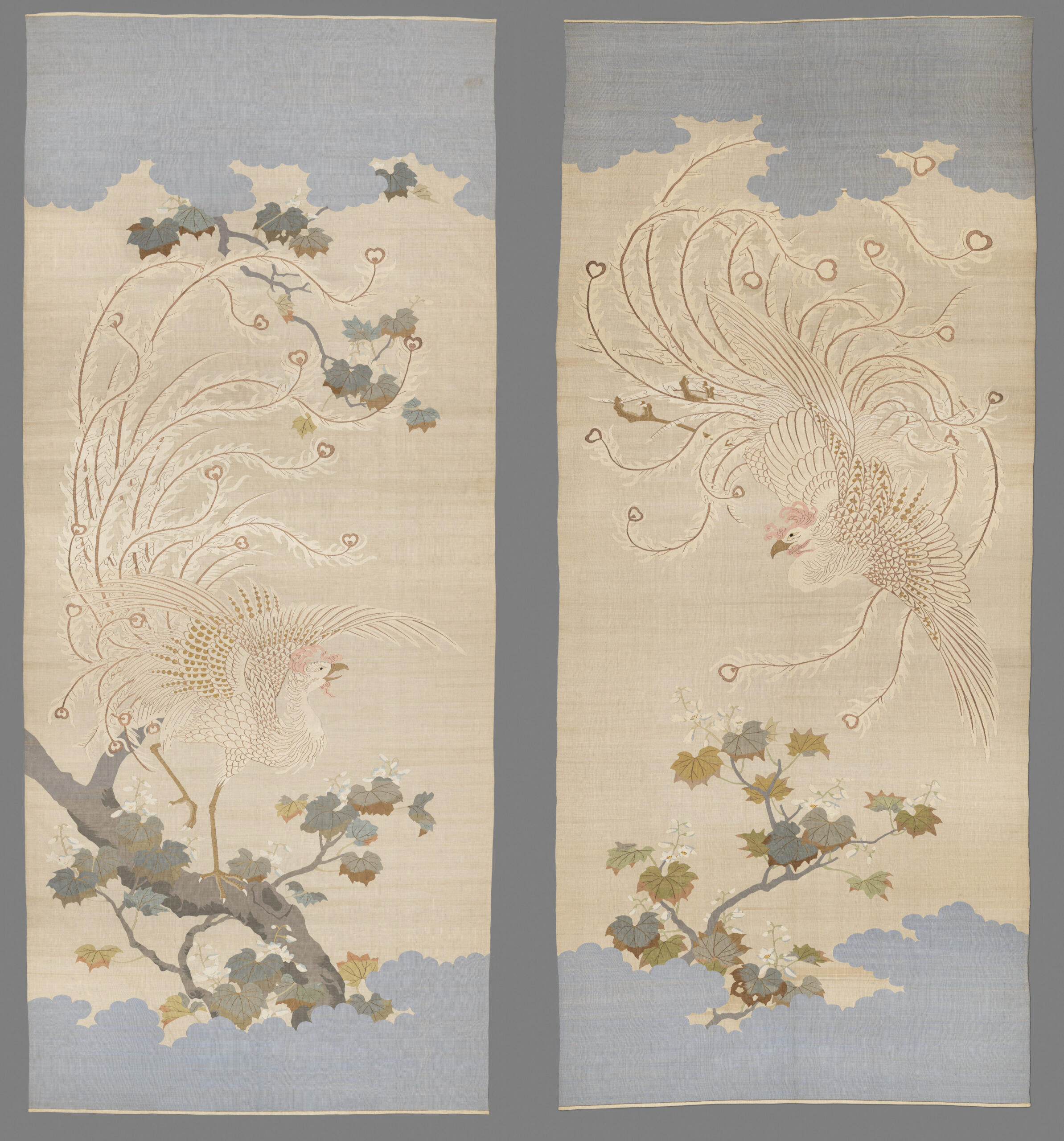‘Weaving Splendor: Treasures of Asian Textiles’
The current exhibition, ‘Weaving Splendor: Treasures of Asian Textiles’, at The Nelson-Atkins Museum of Art until 6 March 2022, demonstrates the wide variety of Asia’s weaving traditions and intricate techniques. In the latest edition of HALI, co-curator Michele Valentine examines some of the masterpieces on display and the cultures they came from. The full article can be read in HALI 209, an abridged version follows.
Defining and transforming space for centuries, Asian textiles brought comfort and beauty to living spaces. Even though they may have been solely decorative, luxurious materials defined and enriched the living and meeting spaces used by rulers and their families. The kesi-woven, 17th-century Chinese chair cover with crane design pictured below, decorated a home during special celebrations, such as birthdays and annual festivals. They carried auspicious wishes of longevity, purity and beauty via the crisp imagery of the cranes, lotus flowers and peaches.
By 1600, Persian royal workshops incorporated precious materials from around the globe. Asian patrons and manufacturers were frequent participants in this new era of exchange. Dating to the early 17th century, this ornate silk carpet in the Polonaise style was woven in the royal Safavid workshops with areas of silk pile and traces of gold and silver brocade that define a composition of flower blossoms, scrolling vines, and serrated leaves emerging from a central medallion.
Textiles often defined living spaces. In order to appeal to international customers and the latest fashions in the developing global market, textile professionals combined new technologies with centuries-old material knowledge. The extraordinary stories of these treasures of the collection take visitors on a journey across continents, from the 1500s to today. Measuring more than 13 feet long, this pair of tapestries with hōō and paulownia demonstrate how Japan during the Meiji and Taishō periods (1868–1926) capitalised on the expanded global market, tailoring luxury goods for American and European tastes, especially for decorating mansions or ceremonial spaces.
Showcasing the breadth and depth of the Nelson-Atkins collection, ‘Weaving Splendor: Treasures of Asian Textiles’ presents some fine examples of pre-modern and modern luxury textile traditions from East, South and West Asia, and offers the opportunity to view these pieces together. While the adjoining Creativity Studio offers an interactive space to experiment with and learn more about some of the textile techniques highlighted in the exhibition.




























Comments [0] Sign in to comment